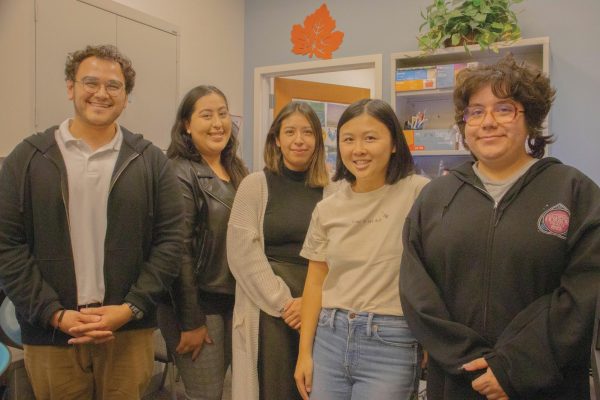A secret garden: Green wonderland in front of our eyes
Environmental science students at Rio Hondo College are planting California-native and drought resistant plants in a garden which will introduce the campus to hillside planting. The plan has been in motion since 2006 when it was detailed in the Rio Hondo College Landscape Master Plan that a Native Plant Garden was to be established on the southeast slope of the science building. Completion of the project had to be postponed until the construction of the Student Services Building was finished in Fall 2011.
Still under construction, student interns and faculty are working to lay the foundation of the native plant and drought resistant garden. The garden has evolved into a sprawling ecosystem with many plants, critters, and insects, while the environmental interns and the professors still maintain and facilitate the garden’s growth.
The garden remains a secret to those who are unfamiliar with the project. Closer examination of the area reveals there is no indication of the garden’s location. There are no signs nor a visible way to get into the garden’s path. Trash is strewn about the garden because of the lack of a “No Littering” sign, When asked if they knew what was supposed to be there, students by the garden had no idea of the its existence despite standing in front of it.
The hillside planting and maintenance is still a work in progress and the lack of interest from students in the Environmental Technology Department is not helping the expedience of the project. Instead of putting an unfinished project on display, it would be “best to wait until the plan came to its fruition for a full unveiling,” said Biology Professor, Robert Bethel.
The gardening is done mostly by faculty of the science department and student interns. Progress has slowed because of the lack of interns available to help care for the garden. The garden sees its worst conditions in the summer when, due to the heat, few students sign up for the native garden internship. Fall is the best season to clean out weeds and plant new vegetation that could sustain themselves; it is imperative to the project that more interns sign up to prepare for the next dry summer.
Aside from the lack of interns able to tend to the garden, also slowing down progress is that native plants take a while to create their root systems. Many plants native to California have deep roots that need to be established when the plant is first introduced to the garden. Roots dispersed deep through the soil make plants drought resistant. When a deep rooted plant is in its early stages it heavily relies on watering while its roots burrow into the soil. While the majority of Southern California is a desert, Rio Hondo College is classified as a chaparral, which is an ecological community composed of shrubby plants that have adapted to moist winters and dry summers.
Despite the difficulty and tedious nature of planting native vegetation, plants native to California are embedded into the state’s history, such as the Manzanita shrub. The Manzanita is an evergreen shrub that has a dark bark with hues ranging from red-orange to ebony. Manzanita leaves were once used by Native Americans from Northern California as a treatment for poison oak rash. A native plant garden could serve as a window into the historical horticulture of California’s indigenous people and early settlers.
The project could be a great introduction into the science of botany. Students interested in the Native Plant Garden internship should enquire through Biology Professor Steve Katnik in Room S113A or at (562) 463-7501.






